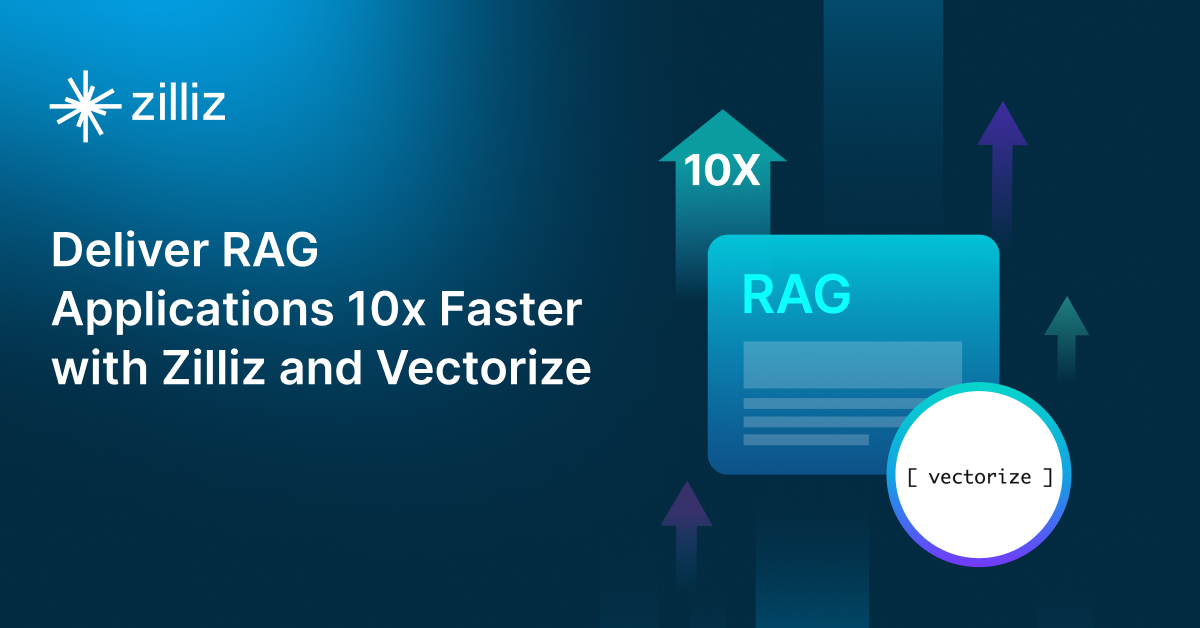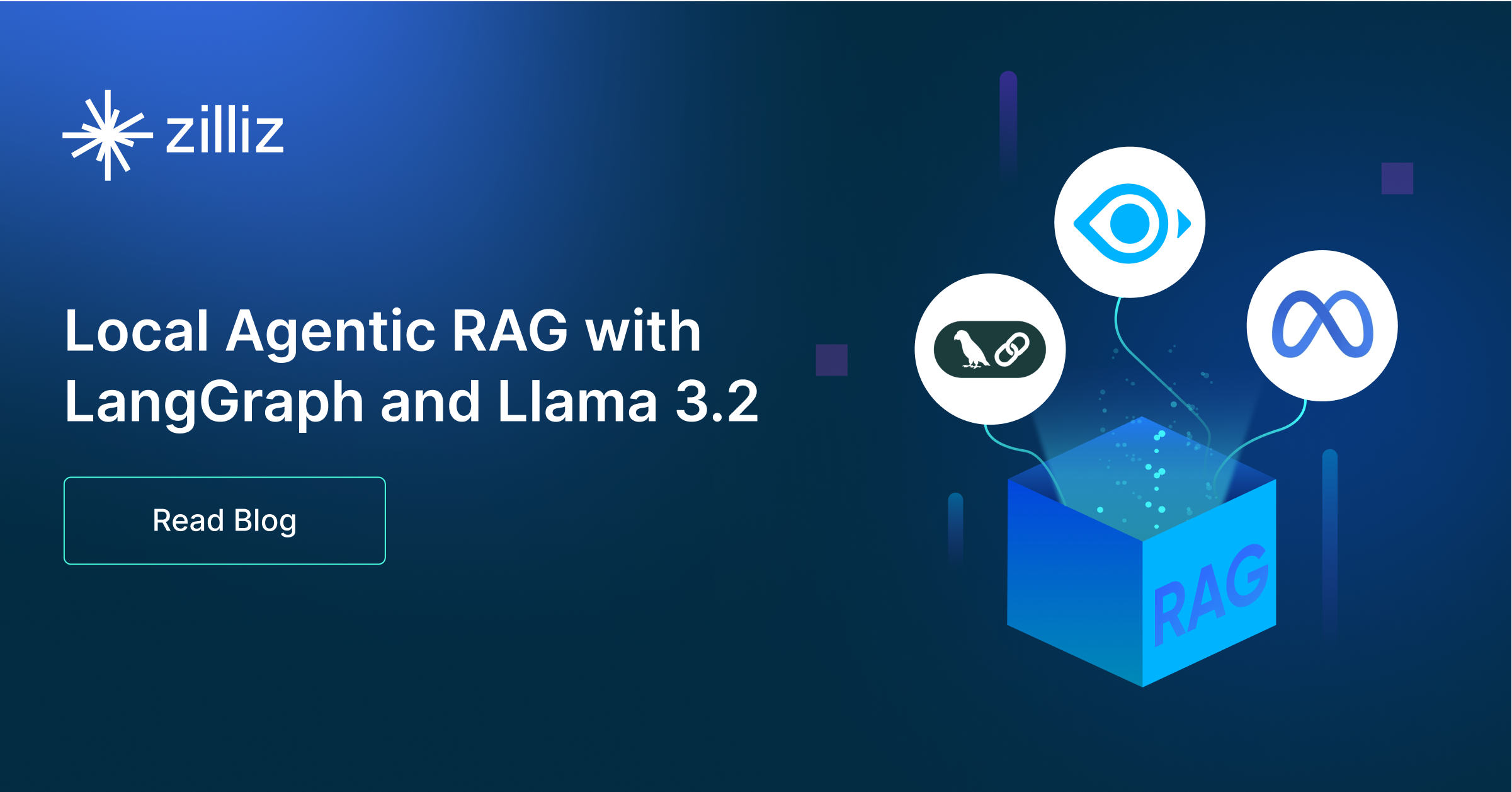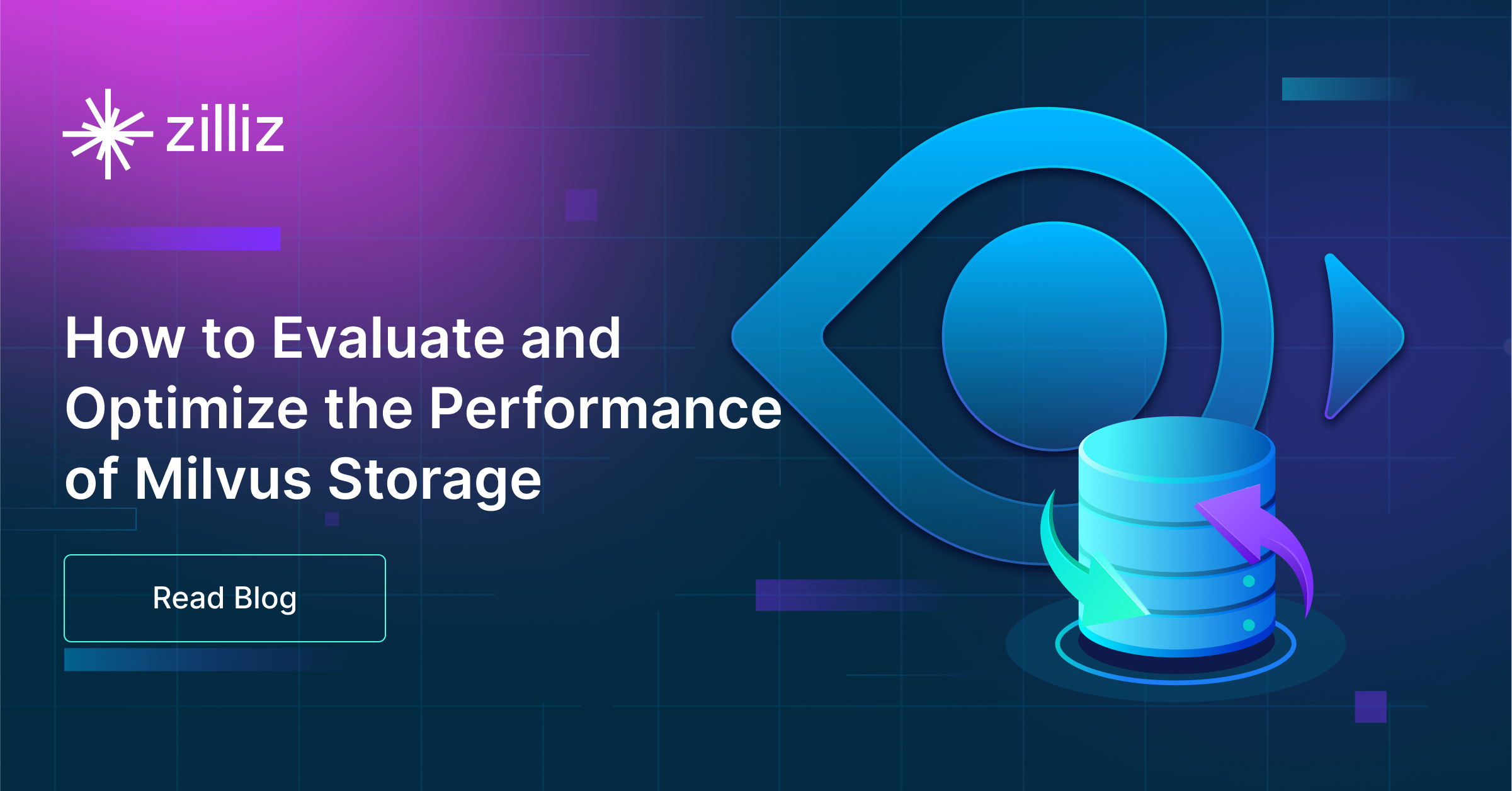Build RAG Chatbot with LangChain, pgvector, Databricks Llama 3.1, and HuggingFace all-mpnet-base-v2
Introduction to RAG
Retrieval-Augmented Generation (RAG) is a game-changer for GenAI applications, especially in conversational AI. It combines the power of pre-trained large language models (LLMs) like OpenAI’s GPT with external knowledge sources stored in vector databases such as Milvus and Zilliz Cloud, allowing for more accurate, contextually relevant, and up-to-date response generation. A RAG pipeline usually consists of four basic components: a vector database, an embedding model, an LLM, and a framework.
Key Components We'll Use for This RAG Chatbot
This tutorial shows you how to build a simple RAG chatbot in Python using the following components:
- LangChain: An open-source framework that helps you orchestrate the interaction between LLMs, vector stores, embedding models, etc, making it easier to integrate a RAG pipeline.
- Pgvector: an open-source extension for PostgreSQL that enables efficient storage and querying of high-dimensional vector data, essential for machine learning and AI applications. Designed to handle embeddings, it supports fast approximate nearest neighbor (ANN) searches using algorithms like HNSW and IVFFlat. Since it is just a vector search add-on to traditional search rather than a purpose-built vector database, it lacks scalability and availability and many other advanced features required by enterprise-level applications. Therefore, if you prefer a much more scalable solution or hate to manage your own infrastructure, we recommend using Zilliz Cloud, which is a fully managed vector database service built on the open-source Milvus and offers a free tier supporting up to 1 million vectors.)
- Databricks Llama 3.1: This advanced generative model from Databricks focuses on data-centric AI and collaborative analytics. It excels in scalable machine learning tasks, providing robust insights and predictions from large datasets. Ideal for organizations looking to leverage data for automated reporting, interactive data exploration, and enhanced decision-making processes.
- HuggingFace all-mpnet-base-v2: This model is a variant of MPNet designed for general-purpose NLP tasks, offering superior performance in sentence embeddings and semantic similarity. It excels in understanding contextual nuances, making it ideal for search, recommendation systems, and any application requiring robust textual comprehension and matching capabilities.
By the end of this tutorial, you’ll have a functional chatbot capable of answering questions based on a custom knowledge base.
Note: Since we may use proprietary models in our tutorials, make sure you have the required API key beforehand.
Step 1: Install and Set Up LangChain
%pip install --quiet --upgrade langchain-text-splitters langchain-community langgraph
Step 2: Install and Set Up Databricks Llama 3.1
pip install -qU "databricks-langchain"
import getpass
import os
if not os.environ.get("DATABRICKS_TOKEN"):
os.environ["DATABRICKS_TOKEN"] = getpass.getpass("Enter API key for Databricks: ")
from databricks_langchain import ChatDatabricks
os.environ["DATABRICKS_HOST"] = "https://example.staging.cloud.databricks.com/serving-endpoints"
llm = ChatDatabricks(endpoint="databricks-meta-llama-3-1-70b-instruct")
Step 3: Install and Set Up HuggingFace all-mpnet-base-v2
pip install -qU langchain-huggingface
from langchain_huggingface import HuggingFaceEmbeddings
embeddings = HuggingFaceEmbeddings(model_name="sentence-transformers/all-mpnet-base-v2")
Step 4: Install and Set Up pgvector
pip install -qU langchain-postgres
from langchain_postgres import PGVector
vector_store = PGVector(
embeddings=embeddings,
collection_name="my_docs",
connection="postgresql+psycopg://...",
)
Step 5: Build a RAG Chatbot
Now that you’ve set up all components, let’s start to build a simple chatbot. We’ll use the Milvus introduction doc as a private knowledge base. You can replace it with your own dataset to customize your RAG chatbot.
import bs4
from langchain import hub
from langchain_community.document_loaders import WebBaseLoader
from langchain_core.documents import Document
from langchain_text_splitters import RecursiveCharacterTextSplitter
from langgraph.graph import START, StateGraph
from typing_extensions import List, TypedDict
# Load and chunk contents of the blog
loader = WebBaseLoader(
web_paths=("https://milvus.io/docs/overview.md",),
bs_kwargs=dict(
parse_only=bs4.SoupStrainer(
class_=("doc-style doc-post-content")
)
),
)
docs = loader.load()
text_splitter = RecursiveCharacterTextSplitter(chunk_size=1000, chunk_overlap=200)
all_splits = text_splitter.split_documents(docs)
# Index chunks
_ = vector_store.add_documents(documents=all_splits)
# Define prompt for question-answering
prompt = hub.pull("rlm/rag-prompt")
# Define state for application
class State(TypedDict):
question: str
context: List[Document]
answer: str
# Define application steps
def retrieve(state: State):
retrieved_docs = vector_store.similarity_search(state["question"])
return {"context": retrieved_docs}
def generate(state: State):
docs_content = "\n\n".join(doc.page_content for doc in state["context"])
messages = prompt.invoke({"question": state["question"], "context": docs_content})
response = llm.invoke(messages)
return {"answer": response.content}
# Compile application and test
graph_builder = StateGraph(State).add_sequence([retrieve, generate])
graph_builder.add_edge(START, "retrieve")
graph = graph_builder.compile()
Test the Chatbot
Yeah! You've built your own chatbot. Let's ask the chatbot a question.
response = graph.invoke({"question": "What data types does Milvus support?"})
print(response["answer"])
Example Output
Milvus supports various data types including sparse vectors, binary vectors, JSON, and arrays. Additionally, it handles common numerical and character types, making it versatile for different data modeling needs. This allows users to manage unstructured or multi-modal data efficiently.
Optimization Tips
As you build your RAG system, optimization is key to ensuring peak performance and efficiency. While setting up the components is an essential first step, fine-tuning each one will help you create a solution that works even better and scales seamlessly. In this section, we’ll share some practical tips for optimizing all these components, giving you the edge to build smarter, faster, and more responsive RAG applications.
LangChain optimization tips
To optimize LangChain, focus on minimizing redundant operations in your workflow by structuring your chains and agents efficiently. Use caching to avoid repeated computations, speeding up your system, and experiment with modular design to ensure that components like models or databases can be easily swapped out. This will provide both flexibility and efficiency, allowing you to quickly scale your system without unnecessary delays or complications.
pgvector optimization tips
To optimize pgvector in a Retrieval-Augmented Generation (RAG) setup, consider indexing your vectors using GiST or IVFFlat to significantly speed up search queries and improve retrieval performance. Make sure to leverage parallelization for query execution, allowing multiple queries to be processed simultaneously, especially for large datasets. Optimize memory usage by tuning the vector storage size and using compressed embeddings where possible. To further enhance query speed, implement pre-filtering techniques to narrow down search space before querying. Regularly rebuild indexes to ensure they are up to date with any new data. Fine-tune vectorization models to reduce dimensionality without sacrificing accuracy, thus improving both storage efficiency and retrieval times. Finally, manage resource allocation carefully, utilizing horizontal scaling for larger datasets and offloading intensive operations to dedicated processing units to maintain responsiveness during high-traffic periods.
Databricks Llama 3.1 optimization tips
Databricks Llama 3.1 is designed for scalable and high-performance RAG applications, making it crucial to optimize retrieval and processing efficiency. Leverage Databricks' distributed computing capabilities to parallelize retrieval and embedding computations, reducing latency for large datasets. Implement hybrid search (combining vector and keyword search) to enhance retrieval relevance. Use optimized prompt templates to minimize token usage while maximizing response quality. Fine-tune temperature (0.1–0.3) for factual consistency and adjust top-k/top-p for response control. Cache frequently queried results to reduce redundant computations, improving both cost and performance. If dealing with large-scale queries, utilize Databricks’ auto-scaling to dynamically allocate resources and avoid bottlenecks. Implement incremental indexing for real-time updates to your vector store, ensuring retrieval accuracy remains high over time.
HuggingFace all-mpnet-base-v2 optimization tips
HuggingFace all-mpnet-base-v2 is a robust and efficient embedding model that excels in semantic understanding for RAG tasks. Optimize retrieval by reducing text noise before embedding, ensuring that only meaningful content is processed. Use approximate nearest neighbor (ANN) search with FAISS or a similar framework to accelerate query resolution without compromising quality. Implement dimensionality reduction techniques to save memory and reduce computational overhead. Leverage caching strategies for frequently queried text embeddings to minimize API calls and improve latency. Fine-tune the embedding model on task-specific data to improve accuracy and relevance in your search results. When scaling, use parallel processing for large datasets and batch embedding operations to optimize throughput.
By implementing these tips across your components, you'll be able to enhance the performance and functionality of your RAG system, ensuring it’s optimized for both speed and accuracy. Keep testing, iterating, and refining your setup to stay ahead in the ever-evolving world of AI development.
RAG Cost Calculator: A Free Tool to Calculate Your Cost in Seconds
Estimating the cost of a Retrieval-Augmented Generation (RAG) pipeline involves analyzing expenses across vector storage, compute resources, and API usage. Key cost drivers include vector database queries, embedding generation, and LLM inference.
RAG Cost Calculator is a free tool that quickly estimates the cost of building a RAG pipeline, including chunking, embedding, vector storage/search, and LLM generation. It also helps you identify cost-saving opportunities and achieve up to 10x cost reduction on vector databases with the serverless option.
 Calculate your RAG cost
Calculate your RAG cost
What Have You Learned?
By now, you’ve unlocked the magic of building a RAG system from the ground up! You learned how LangChain acts as the glue, seamlessly connecting every component in your pipeline. With its flexible framework, you orchestrated the flow of data—from ingesting documents and splitting them into chunks with smart text splitters to routing queries through your custom logic. Then came pgvector, your trusty vector database, where you stored embeddings generated by Hugging Face’s powerful all-mpnet-base-v2 model. This embedding model transformed text into rich numerical representations, enabling pgvector to perform lightning-fast similarity searches. When it was time to generate answers, Databricks’ Llama 3.1 stepped in, leveraging its advanced reasoning to craft human-like responses grounded in the retrieved context. You saw how each piece—framework, database, LLM, and embeddings—plays a critical role in creating a system that’s both intelligent and efficient.
But you didn’t stop there! You explored optimization tricks like tuning chunk sizes, adding metadata for better filtering, and indexing strategies to speed up searches. Plus, you discovered how tools like the free RAG cost calculator help estimate expenses, making it easier to balance performance and budget. Imagine what’s next: refining your pipeline for niche use cases, experimenting with hybrid search, or even fine-tuning models for domain-specific brilliance. The skills you’ve gained aren’t just theoretical—they’re a launchpad for real-world AI applications. So go ahead—dive into your next project, tweak those parameters, and watch your RAG system shine. The future of intelligent apps is in your hands, and you’re more than ready to build it. Let’s get creating! 🚀
Further Resources
🌟 In addition to this RAG tutorial, unleash your full potential with these incredible resources to level up your RAG skills.
- How to Build a Multimodal RAG | Documentation
- How to Enhance the Performance of Your RAG Pipeline
- Graph RAG with Milvus | Documentation
- How to Evaluate RAG Applications - Zilliz Learn
- Generative AI Resource Hub | Zilliz
We'd Love to Hear What You Think!
We’d love to hear your thoughts! 🌟 Leave your questions or comments below or join our vibrant Milvus Discord community to share your experiences, ask questions, or connect with thousands of AI enthusiasts. Your journey matters to us!
If you like this tutorial, show your support by giving our Milvus GitHub repo a star ⭐—it means the world to us and inspires us to keep creating! 💖
- Introduction to RAG
- Key Components We'll Use for This RAG Chatbot
- Step 1: Install and Set Up LangChain
- Step 2: Install and Set Up Databricks Llama 3.1
- Step 3: Install and Set Up HuggingFace all-mpnet-base-v2
- Step 4: Install and Set Up pgvector
- Step 5: Build a RAG Chatbot
- Optimization Tips
- RAG Cost Calculator: A Free Tool to Calculate Your Cost in Seconds
- What Have You Learned?
- Further Resources
- We'd Love to Hear What You Think!
Content
Vector Database at Scale
Zilliz Cloud is a fully-managed vector database built for scale, perfect for your RAG apps.
Try Zilliz Cloud for Free


